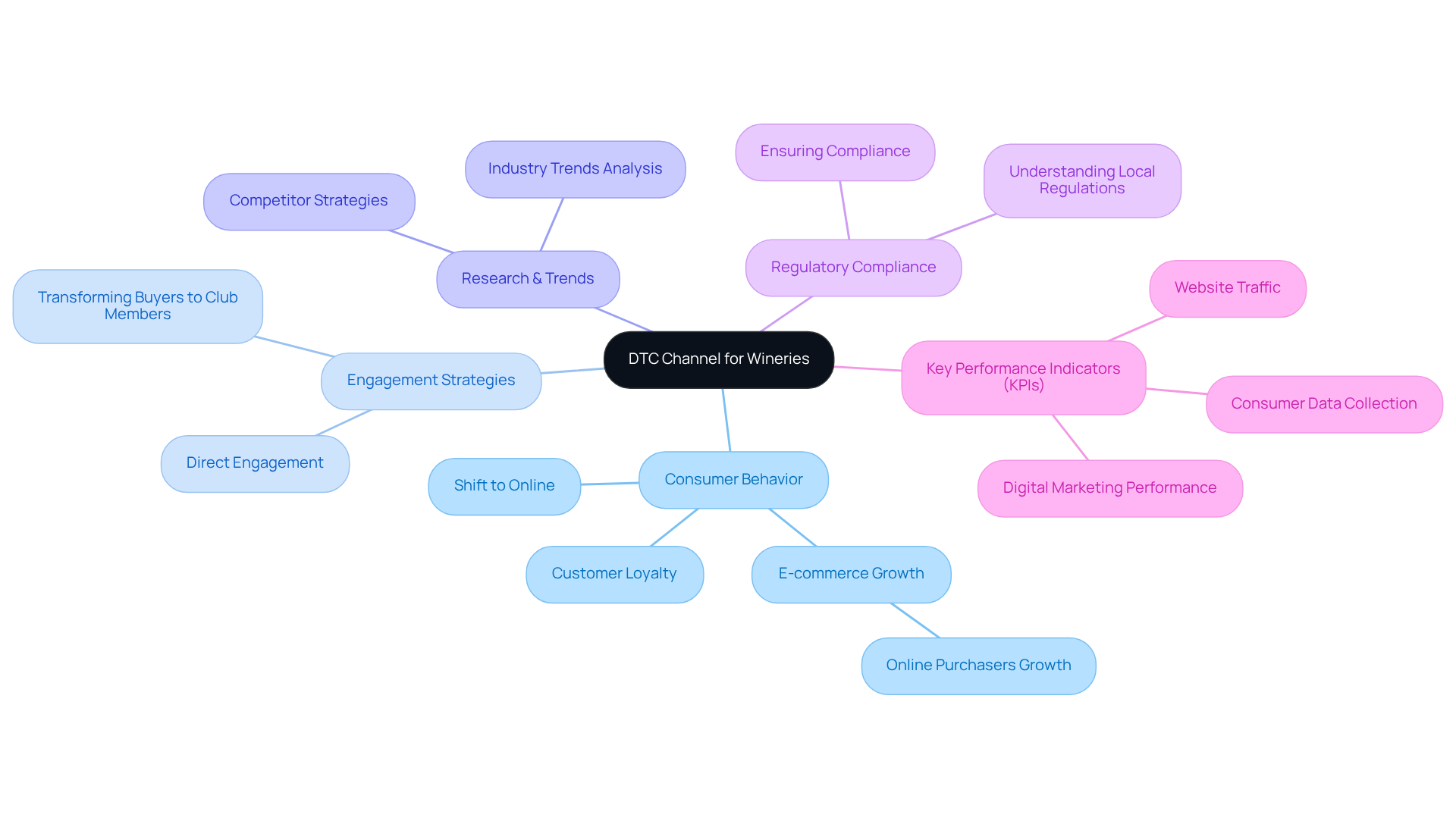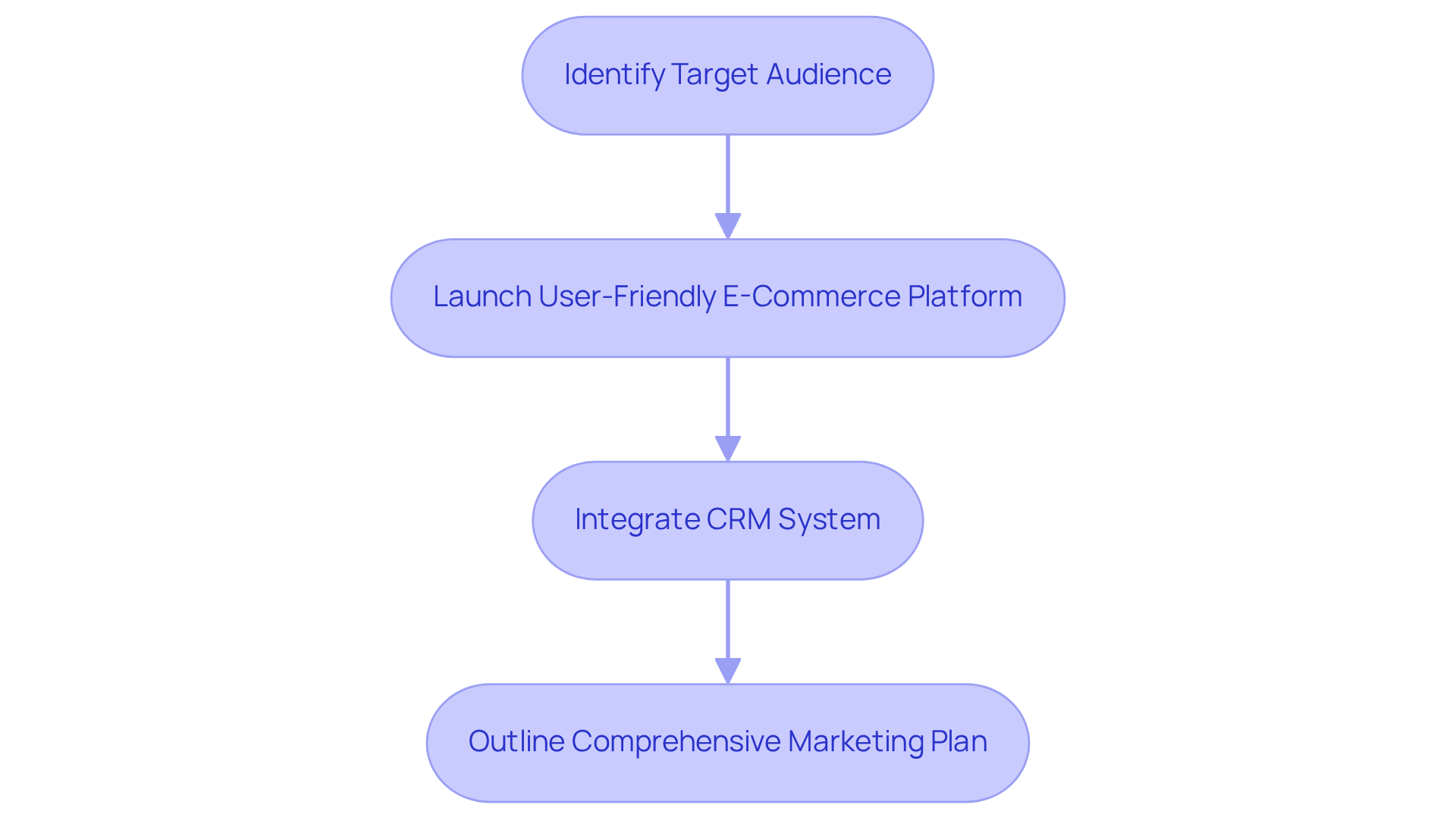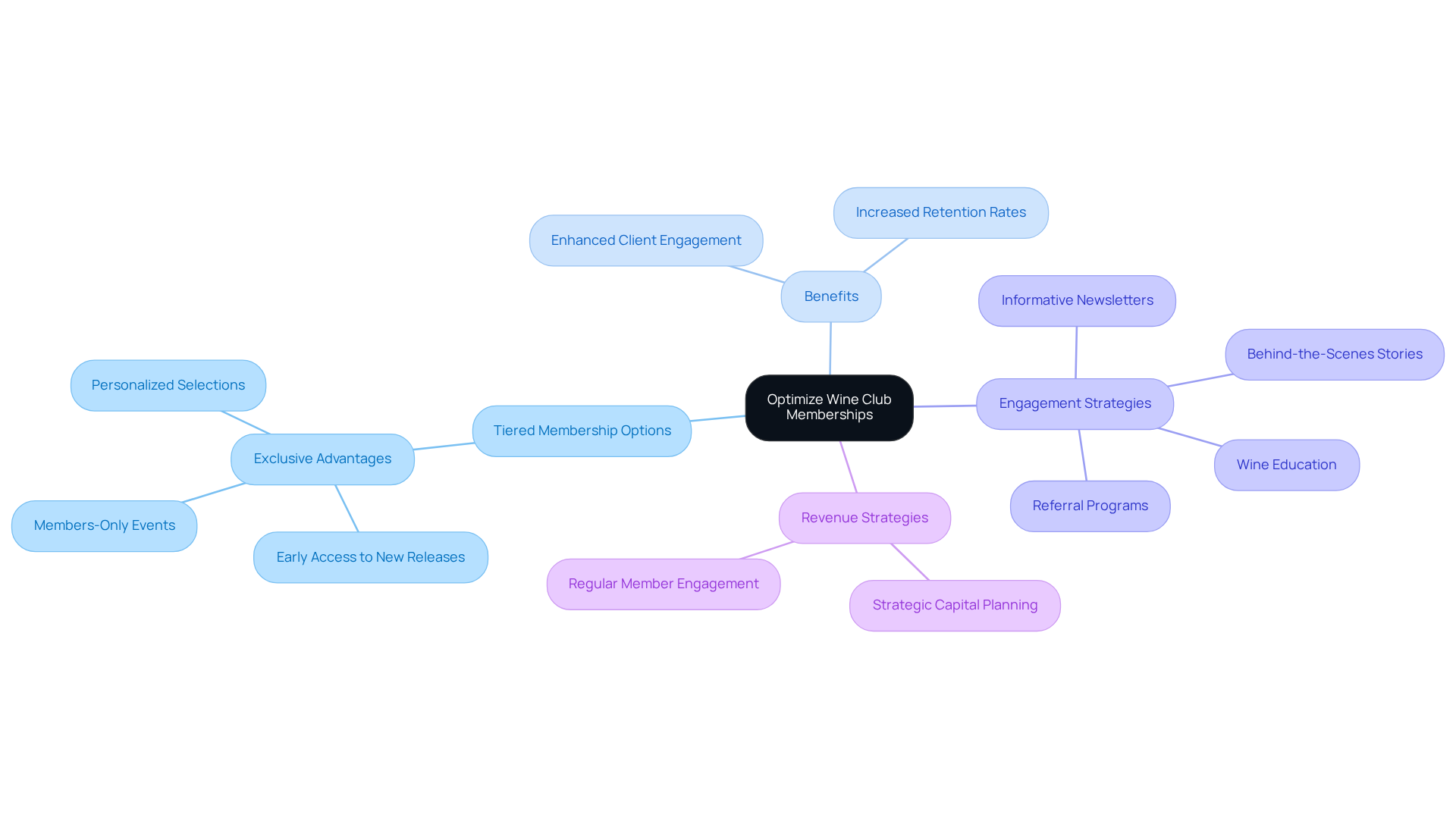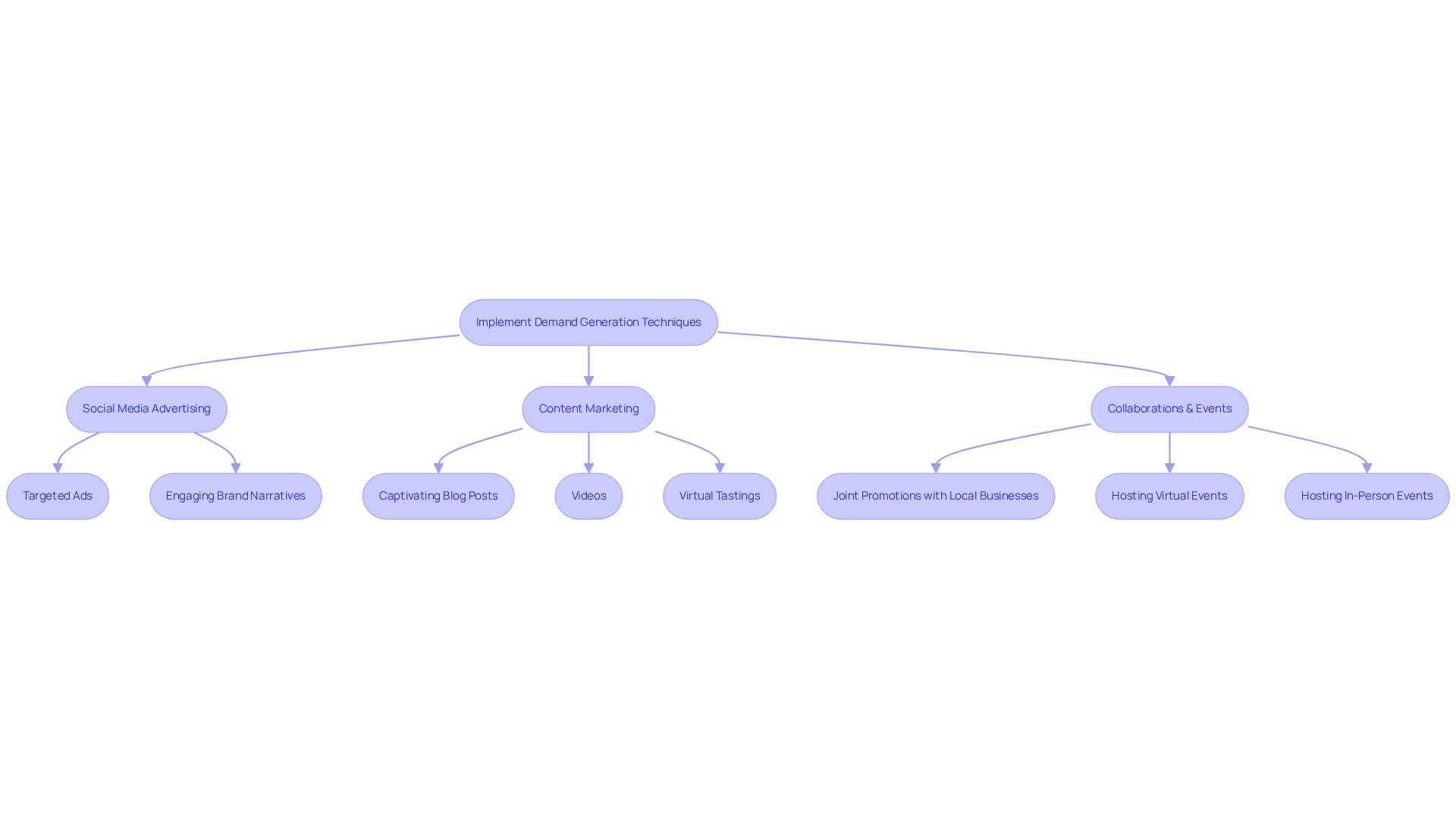Overview
To successfully launch a direct-to-consumer (DTC) channel for wineries, it is imperative to understand consumer behavior and develop effective strategies tailored to target audiences. This involves optimizing wine club memberships and implementing demand generation techniques. By leveraging online platforms and creating personalized experiences, wineries can significantly enhance customer engagement and loyalty. Ultimately, this approach drives sales growth in a competitive market.
Establishing a DTC channel not only requires expertise but also a deep understanding of the market dynamics. Wineries must recognize the importance of consumer preferences and adapt their strategies accordingly. By focusing on customer-centric initiatives, they can foster stronger relationships with their audience, leading to increased retention and advocacy.
Moreover, optimizing wine club memberships serves as a crucial tactic in this endeavor. A well-structured membership program not only provides value to consumers but also creates a steady revenue stream for wineries. Implementing effective demand generation techniques further amplifies this effort, ensuring that wineries can reach potential customers effectively.
In conclusion, the integration of these strategies will empower wineries to navigate the complexities of the market successfully. By embracing online platforms and prioritizing personalized experiences, they can position themselves for sustained growth and success.
Introduction
The wine industry is undergoing a transformative shift, as an increasing number of consumers embrace online platforms for their purchases. E-commerce wine sales have surged dramatically, skyrocketing from 1.5 million to over 4 million buyers. This remarkable growth presents a unique opportunity for wineries to establish a direct-to-consumer (DTC) channel. Such a channel not only boosts sales but also fosters lasting customer relationships.
However, navigating the complexities of launching a successful DTC strategy raises critical questions:
- How can wineries effectively engage with their audience?
- What strategies can optimize membership programs?
- How can they implement demand generation techniques to thrive in this competitive landscape?
Addressing these questions is essential for wineries looking to capitalize on the e-commerce boom and secure their position in the market.
Understand the DTC Channel Landscape for Wineries
To successfully launch the DTC channel for winery, it is essential for wineries to grasp the evolving landscape of buying behavior, particularly the significant shift towards online platforms. The surge in e-commerce wine sales is unmistakable, with online purchasers expanding from 1.5 million to 4.1 million. This trend underscores the critical need for direct engagement with customers. Enocap highlights the necessity to launch a DTC channel for the winery that fosters consistent growth, transforming casual buyers into devoted club members through established strategies.
Conducting thorough research on industry trends and analyzing competitors who have adeptly implemented DTC strategies will enable wineries to identify best practices. Furthermore, comprehending the regulatory environment governing direct sales in your region is vital, as compliance ensures seamless operations. Collecting consumer data is essential for informing market expansion and effectively tailoring strategies. As industry experts assert, maintaining an online presence while also engaging customers in-store is paramount for maximizing reach.
Familiarizing yourself with Key Performance Indicators (KPIs) will facilitate the evaluation of your digital marketing performance and guide strategic decisions. This positioning is crucial for wineries striving for success in a competitive market.

Develop Effective Strategies for DTC Sales Channel Implementation
To effectively launch a DTC channel for winery sales, it is essential to start by identifying your target audience through comprehensive consumer personas. This foundational step allows you to tailor your messaging and offerings to resonate with potential buyers. In 2025, understanding the preferences of younger generations—particularly Millennials and Gen Z—is crucial, as they increasingly favor the convenience of subscription services and personalized experiences.
Next, launch a DTC channel for the winery to establish a user-friendly e-commerce platform that not only showcases your wines but also tells your brand story. Premium visuals and captivating material are vital for showcasing your establishment's distinctive identity and drawing in patrons. Research indicates that a seamless online shopping experience significantly boosts conversion rates, making it imperative to invest in an intuitive design.
Integrating a Customer Relationship Management (CRM) system can further enhance your operations by effectively managing customer interactions and tracking sales data. This technology enables wineries to personalize communications, which is vital since personalized emails can improve engagement rates significantly.
Finally, outline a comprehensive marketing plan that leverages social media, email campaigns, and partnerships with influencers to successfully launch a DTC channel for the winery. Engaging with consumers through these channels not only drives traffic to your DTC platform but also fosters community and brand loyalty. For instance, organizing online tastings or employing influencer marketing can establish genuine connections with your audience, ultimately resulting in higher sales and client retention.

Optimize Wine Club Memberships for Enhanced Customer Loyalty
To foster patron loyalty, enhancing club memberships is essential. Implementing tiered membership options that cater to diverse client preferences and budgets can be a game-changer. These tiers can offer exclusive advantages such as:
- Early access to new releases
- Invitations to members-only events
- Personalized selections tailored to individual tastes
Insights from industry experts indicate that tiered memberships significantly enhance client engagement and retention by providing tailored experiences that resonate with members' preferences.
Moreover, Enocap underscores the importance to launch DTC channels for the winery that drive consistent growth—an approach that aligns perfectly with the need for regular engagement with members through informative newsletters. Sharing updates, wine education, and behind-the-scenes stories from your winery can greatly enhance their experience. Additionally, consider implementing a referral program that rewards members for bringing in new clients. This strategy not only encourages loyalty but also promotes organic expansion of your clientele.
Integrating strategic capital planning into your membership model can further refine revenue strategies, ensuring that your establishment thrives in a competitive market. Statistics reveal that establishments adopting tiered membership models have experienced heightened customer satisfaction and retention rates, making this approach a beneficial strategy in today’s competitive landscape.

Implement Demand Generation Techniques to Drive Sales Growth
To stimulate sales growth, wineries must launch DTC channel for winery by adopting demand generation techniques that create buzz around their offerings. Begin by utilizing social media platforms for targeted advertising efforts that showcase your distinctive beverages and craft engaging brand narratives that resonate with audiences. Engaging content marketing—through captivating blog posts, videos, and virtual tastings—can effectively inform individuals about your products and the winemaking process, thereby enhancing their connection to your brand. Notably, worldwide organic beverage sales are projected to increase by over 10% in the next five years, indicating a growing interest among consumers in quality products.
Collaborating with local dining establishments and merchants for joint promotional opportunities can also introduce your beverages to new audiences, thereby broadening your reach. Furthermore, hosting both virtual and in-person events fosters community engagement and allows consumers to experience your wines firsthand.
The success of Archer Roose Wines, which has experienced a 64% increase in sales year-to-date through strategic partnerships, exemplifies the effectiveness of these strategies. By transforming casual buyers into loyal club members through proven approaches, these techniques not only build brand awareness but also help to launch the DTC channel for winery, positioning your winery for sustained success in a competitive market.

Conclusion
Launching a Direct-to-Consumer (DTC) channel for wineries is a transformative opportunity to engage with customers and boost sales. Understanding the current landscape allows wineries to harness the potential of e-commerce and direct engagement, cultivating lasting relationships with their clientele. This strategic shift not only meets the growing demand for online wine purchases but also positions wineries to thrive in an increasingly competitive market.
Key steps for successfully implementing a DTC channel have been outlined throughout this article:
- Conducting thorough research on consumer behavior and regulatory compliance
- Developing effective marketing strategies
- Optimizing wine club memberships
These are crucial elements in establishing a robust DTC presence. By emphasizing the importance of personalization and community engagement, wineries can create memorable experiences that resonate with their target audience, ultimately driving sales growth and customer loyalty.
As the wine industry continues to evolve, it is essential for wineries to embrace these strategies and adapt to changing consumer preferences. By prioritizing direct engagement, leveraging innovative marketing techniques, and enhancing wine club offerings, wineries can not only increase their market share but also foster a loyal customer base. The journey to a successful DTC channel transcends mere sales; it’s about building a brand that connects with wine lovers on a deeper level, ensuring long-term success in the dynamic world of wine.
Frequently Asked Questions
Why is it important for wineries to understand the DTC channel landscape?
Understanding the DTC channel landscape is essential for wineries to grasp the evolving buying behavior, particularly the shift towards online platforms, which is critical for engaging customers directly and fostering growth.
What has been the trend in e-commerce wine sales?
E-commerce wine sales have significantly increased, with online purchasers expanding from 1.5 million to 4.1 million, highlighting the importance of a direct-to-consumer (DTC) approach.
How can wineries transform casual buyers into devoted club members?
Wineries can transform casual buyers into devoted club members by implementing established strategies that foster consistent growth within their DTC channel.
What steps should wineries take to implement a successful DTC strategy?
Wineries should conduct thorough research on industry trends, analyze competitors who have successfully implemented DTC strategies, and understand the regulatory environment governing direct sales in their region.
Why is consumer data collection important for wineries?
Collecting consumer data is essential for informing market expansion and effectively tailoring strategies to meet customer needs.
What is the significance of maintaining an online presence for wineries?
Maintaining an online presence while also engaging customers in-store is crucial for maximizing reach and ensuring effective customer engagement.
How can wineries evaluate their digital marketing performance?
Wineries can evaluate their digital marketing performance by familiarizing themselves with Key Performance Indicators (KPIs), which will guide strategic decisions.




